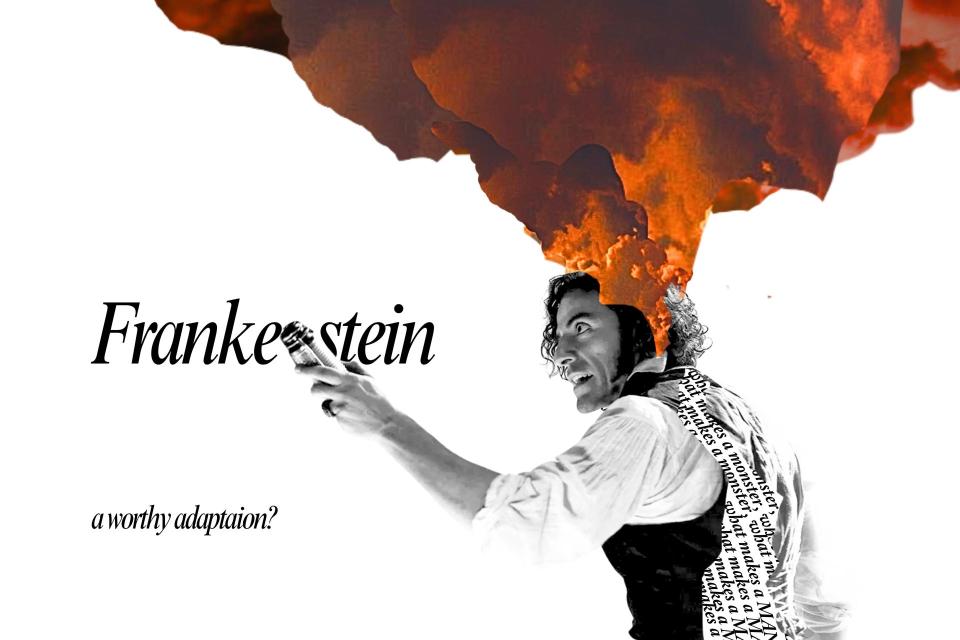Guillermo Del Toro’s Frankenstein: a worthy adaptation?
As you may have heard or seen, the newest rendition of the classic gothic horror story “Frankenstein” has hit Netflix, directed by none other than Guillermo Del Toro. The verdict? It’s fine.
To be fair, it’s a fun watch and especially easy to become engrossed in. But artistically? It lacked depth in its attempt to recreate Shelley’s masterpiece. Del Toro did a good job with what he knows. The stunning costumes, look of the creature, and consistency with the narrative devices of the book were all done quite well. The incredible performances from the actors stood out. But put it next to the book, and it looks like a comic strip.
The thing about Mary Shelley’s “Frankenstein” was the fact that it managed to write a complex tapestry of a story into a book that wasn’t particularly long. The creature’s story and parallel to Victor Frankenstein is fleshed out in a way that simply can’t be recreated on the screen. Had I not read the book beforehand, I might have been moved by the movie’s storytelling, but Shelley set the bar so high that I can’t help but be underwhelmed.
My main disappointment lies in the choices Del Toro makes that turn away from the original.
To begin, Shelley left out the secret of how to raise the dead, without even attempting to explain the process to the reader. This was a conscious and well advised decision because leaving the process open-ended allowed for suspension of disbelief. The movie, however, simply presents a process and relies on the reader to be fine with that.
The next major decision made was the fact that Victor Frankenstein kept the creature. Crucial to the creature’s nature in the book is the fact that Frankenstein’s original reaction to his creation was disgust, and thus the creature ran away to be raised by nature. By keeping the creature chained up in the basement of the tower, Del Toro creates a separate backstory, which he supersimposes in place of the intricately woven story that Shelley used to develop the dynamic between creator and creation. It just falls short.
None of this is to say that “Frankenstein” is a bad movie. It was a good way to spend two and a half hours, but compare the Matterhorn to Everest and try not to be disappointed. It’s another adaptation that would be great if it had no predecessors, but – unfortunately for Del Toro – it does.

